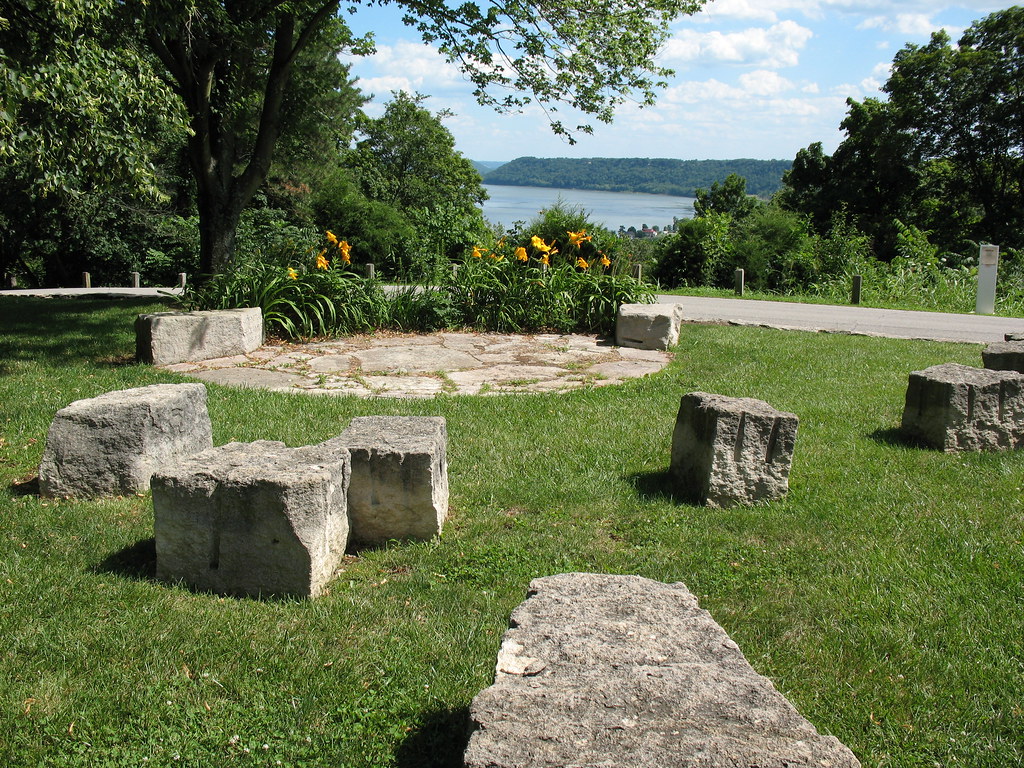Effects of Digital Storytelling Projects on Student Learning in the Humanities
This study will interrogate the ways in which digital storytelling might affect student learning in humanities courses. With an increase in online learning, traditional methods of student assessment may shift in terms of course assignments and projects. Digital storytelling has the potential to give students more agency in their coursework by developing their own way of articulating their experiences and tying it to course content. Additionally, students will have the opportunity to develop a variety of skills using digital tools to creatively express their point of view while still participating in the important work of doing research and developing a well informed narrative.
Research Questions
Can the incorporation of digital storytelling into humanities curriculum increase student understanding of course material in an interdisciplinary arts and humanities course in a way that leads to an overall increase student grades?
Will student engagement with course content be greater when students are asked to complete digital projects versus more traditional assignments and lead to more time spent working on course assignments?
Review of Literature
Barber, John F. “Digital storytelling: New opportunities for humanities scholarship and pedagogy.” Cogent Arts & Humanities, vol. 3, no. 1, June 2016, doi:10.1080/23311983.2016.1181037.
In this essay, Barber describes the ways in which digital storytelling might be incorporated into the humanities classroom to encourage alternative ways of developing narrative, creating interactive projects, and supporting collaborative work. He defines and describes methodologies of digital storytelling and makes suggestions as to how instructors might incorporate it into their pedagogy.
Benmayor, Rita. “Digital Storytelling as a Signature Pedagogy for the New Humanities.” Arts and Humanities in Higher Education, vol. 7, no. 2, Jan. 2008, pp. 188-204, doi:10.1177/1474022208088648.
This essay makes the argument that digital storytelling creates a pedagogical space in which students can develop multimedia narratives that encourage social and cross-cultural collaboration and learning. Benymayor traces one student’s project from conception to completion to specifically breakdown how the creation of a digital story reinvigorates humanities pedagogy and inspires students’ scholarship in new and exciting ways.
Clarke, Robert Garth Hipkins and Sharon Thomas. “Digital Narrative and the Humanities: An Evaluation of the Use of Digital Storytelling in an Australian Undergraduate Literary Studies Program.” Higher Education Studies, vol. 2, no. 3, 2012, doi:10.5539.hes.v2n3p30.
This study analyzes the effects of the implementation of digital storytelling projects into literature courses at an Australian university. It hoped to determine participants’ attitudes toward multimedia projects in the classroom as well as the amount of training involved for instructors. The researchers determined that overall, student attitudes toward developing digital narratives in the classroom were positive.
Coventry, Michael. “Cross-currents of Pedagogy and Technology: A Forum on Digital Storytelling and Cultural Critique: Introduction.” Arts and Humanities in Higher Education, vol. 7, no. 2, Jan. 2008, pp. 165-170, doi:10.1177/1474022208088646.
In this introduction, Coventry provides a brief overview of the ways digital storytelling has been incorporated into research projects as well as into pedagogy throughout the 2000s.
Coventry, Michael: “Engaging Gender: Student application of theory through digital storytelling.” Arts and Humanities in Higher Education, vol. 7, no. 2, Jan. 2008, pp. 205-219, doi:10.1177/1474022208088649.
Coventry explores how digital storytelling can provide an alternative way for students to engage with material by providing a new medium for them to present their ideas. He focuses on a single student’s project to breakdown how students work through the process of creating a digital story and embrace it as a means of absorbing and reiterating course concepts.
Fletcher, Christopher and Carolina Cambre. “Digital Storytelling and Implicated Scholarship in the Classroom.” Journal of Canadian Studies, vol. 43, no. 1, 2009, pp. 109-130, doi:10.3138/jcs.43.1.109.
This essay investigates the ways in which digital storytelling projects can interface with the idea of implicated scholarship in the classroom. It exams different instances of digital storytelling being used in universities as a pedagogical tool and questions how these kinds of projects may shift student awareness of social issues.
Lunce, Carol. “Digital Storytelling as an Educational Tool.” Indiana Libraries, vol. 30, no. 1, 2011.
Lunce’s essay explores the benefits of incorporating digital storytelling in the K through 12 and higher education classroom and addresses the training requirements for faculty. She provides suggestions on how to organize a workshop for interested faculty and points readers toward several useful tools and resources.
Sadik, Alaa. “Digital Storytelling: a meaningful technology-integrated approach for engaged student learning.” Educational Technology Research and Development, vol. 56, no. 4, Nov. 2008, pp. 487-506, doi:10.1007/s11423-008-9091-8.
This study was run in Egyptian classrooms where digital stories were created through MS Photo Story, which has limited storytelling applications. However, the study concluded that since most students met the pedagogical goals of the assignment there is a clear potential for digital storytelling projects to increase student understanding of course content.
Smeda, Najat, et al. “The effectiveness of digital storytelling in the classrooms: a comprehensive study.” Smart Learning Environments, vol. 1, no. 1, 2014, doi:10.1186/s40561-014-0006-3.
This study was run in Australian elementary and secondary schools. The focus was less on the technology itself increasing student engagement but more on whether this kind of digital project could help transform the classroom into more of a social-constructivist environment for learning.
Yang, Ya-Ting C. and Wan-Chi I. Wu. “Digital storytelling for enhancing student academic achievement, critical thinking, and learning motivation: A year-long experimental study.” Computers & Education, vol. 59, no. 2, 2012, pp. 339-352, doi:10.1016/j.compedu.2011.12.012.
In this study, the researchers investigated the impact digital storytelling had on learning in high school students learning English as a foreign language. The researchers determined from quantitative and qualitative data they collected that digital storytelling did have a significant impact on increasing student performance in the course over those who participated in a lecture-only style course.
Methods
I will develop two surveys for students: one to be completed at the beginning of the study and one at the end. This survey will ask questions about their previous experiences using various technologies related to digital storytelling, if students have heard of or utilized digital storytelling before, what the term digital storytelling means to them, and the role they feel it might or has played in their humanities education. All students participating in the creation of digital storytelling will be asked to complete these surveys. Additionally, I will ask any participating instructors (or do it myself, if I’m running the study in one of my own courses) to write reflections on the process of scaffolding toward the digital storytelling projects. These reflections might discuss the ways students respond to using certain technologies, any difficulties with tools training, issues with time management, or student comments on the projects. I also might compare the grades of students completing more traditional final projects such as essays with those of the students completing digital storytelling projects. This would need to be across different sections of the same class in that term, or data could be compared to a previous iteration of the course the had the same content but more traditional projects. Both students and teachers will be asked to log how long students spend working on the digital storytelling projects, and this information can be compared with the time students spend working on more traditional projects. The quality and content of the digital stories themselves, with student permission, might be a point of analysis.
Constraints
This study would ideally take place across a single semester, and therefore issues of time constraints are probable. The instructor will need to have good time management skills in order to incorporate the instruction needed to provide adequate background on how to use certain digital tools before students can begin their storytelling projects. Alongside the course content, these technology skills would need to be scaffolded throughout the course. With the use of audio clips, images, and video students will also need to have a clear understanding of the related copyright issues. If survey results are inconclusive, the study may need to be run again with a larger group of students. The comparison of grades between students also poses a potential issue–this method of analysis is dependent on running a study in a course that has already been run at least once. Alternatively, the study would need to be run in a course that has multiple sections taught by an instructor with the flexibility to simultaneously teach students how to develop digital storytelling projects in one section and more traditional projects in another. However, with both of these options, it still involves comparing different students’ grades rather than comparing a student’s work on a more traditional project to that same student’s work on a digital story, which could potentially skew results.
Results
Upon reviewing student surveys, grades, time logs, and teacher reflections, if the study was successful these tools would report an increased level of engagement and understanding with course content through the creation of digital storytelling projects. If the results of the study indicate that there was a decrease in student engagement and understanding after the incorporation of digital storytelling, we would hopefully be able to pinpoint through these means what when wrong. For instance, if time management was an issue when figuring out how to teach the digital tools alongside other course content, the process for this could be revised and then implemented in a new run of the study. If results are inconclusive, the study may need to be run on a larger group of students or over a longer period of time to see results.









